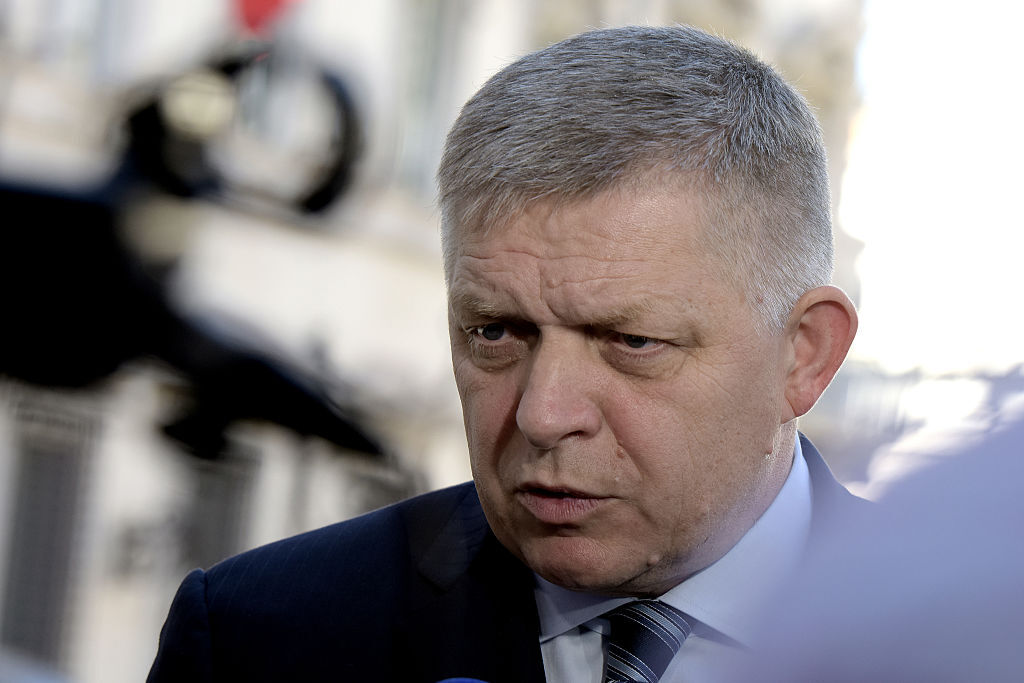Slovak Automotive Energy Policy & EU Tech Integration
Explore Slovakia's automotive energy policies, tech advancements, and EU integration strategies.
Executive Summary
The Slovakian automotive industry's energy policy in 2025 is characterized by a strategic transition towards electromobility and an increased adoption of renewable energy sources, aligning with the European Union's ambitious climate targets. This transition is supported by a mixture of legislative measures, targeted investments, and infrastructure advancements designed to enhance the industry's competitiveness and facilitate seamless EU integration.
Key strategies include the accelerated shift to electric vehicles (EVs), with commitments from major automakers such as Volvo to transition production lines by 2030, ahead of the EU's 2035 fossil fuel phase-out deadline. National efforts focus on developing a comprehensive network of ultra-fast charging stations, bolstered by government and EU funds. This investment is critical for maintaining competitive parity within the EU market.
Technological development within the sector is facilitated through the integration of computational methods and data analysis frameworks. For instance, automated processes in manufacturing and supply chain optimization enhance operational efficiency and sustainability. Moreover, the deployment of systematic approaches to energy management ensures compliance with EU regulations and promotes sustainable growth.
Background
The Slovakian automotive industry, a cornerstone of the nation's economy, has increasingly become a focal point in the discourse on energy policy and technological development within the context of European Union (EU) integration. Historically, the sector's growth accelerated post-1990s with foreign investments from major automotive giants, positioning Slovakia as a key player in car production. The industry contributed significantly to GDP and employment, benefitting from Slovakia's strategic location and robust manufacturing capabilities.
With the EU setting ambitious climate goals, such as net-zero emissions by 2050, Slovakia's automotive sector is under pressure to adapt. The EU's policy framework mandates member states to align national policies with broader climate objectives, influencing Slovakia to integrate electromobility and renewable energy into its automotive strategies. This alignment is crucial as the EU aims to phase out internal combustion engines, necessitating a shift towards electric vehicles (EVs).
Comparison of Slovakian Automotive Industry's Energy Policies with Other EU Countries
Source: [1]
| Country | EV Transition Target | Renewable Energy in Transport | Battery Supply Chain Localization |
|---|---|---|---|
| Slovakia | 2030 for major carmakers | 23-25% by 2030 | Strong focus on localization |
| Germany | 2030 for all new cars | 30% by 2030 | High localization with major investments |
| France | 2030 for all new cars | 32% by 2030 | Moderate localization efforts |
| Italy | 2035 for all new cars | 28% by 2030 | Emerging localization initiatives |
Key insights: Slovakia is on par with leading EU countries in terms of EV transition timelines. • Renewable energy integration targets in Slovakia are ambitious but slightly lower than some EU counterparts. • Slovakia places a strong emphasis on localizing battery supply chains to enhance competitiveness.
The transition to electromobility is a pivotal element, with major Slovak car manufacturers committing to EV production lines by 2030, aligning with EU directives to discontinue fossil-fuel vehicles by 2035. This transition necessitates a systematic approach to infrastructure, including the deployment of ultra-fast charging networks supported by both national and EU funding.
Furthermore, Slovakia aims to expand the share of renewable energy in transport to 23-25% by 2030, slightly below some EU peers but indicative of a strong commitment to sustainable practices. Localization of the battery supply chain is emphasized to enhance domestic industry resilience and competitiveness.
# Python Flask example for a RESTful API providing EV charging station data
from flask import Flask, jsonify, request
from functools import wraps
app = Flask(__name__)
# Mock data for EV charging stations
charging_stations = [
{"id": 1, "location": "Bratislava", "status": "available"},
{"id": 2, "location": "Košice", "status": "occupied"}
]
def authenticate(func):
@wraps(func)
def wrapped(*args, **kwargs):
api_key = request.headers.get('API-Key')
if api_key != 'your-secure-api-key':
return jsonify({"message": "Unauthorized"}), 401
return func(*args, **kwargs)
return wrapped
@app.route('/stations', methods=['GET'])
@authenticate
def get_stations():
return jsonify({"stations": charging_stations})
if __name__ == '__main__':
app.run(debug=True)
What This Code Does:
This code snippet provides a RESTful API for accessing real-time data on EV charging stations in Slovakia. It includes authentication to ensure only authorized access.
Business Impact:
By providing up-to-date information on charging station availability, this API enhances user experience, reduces wait times, and optimizes station usage.
Implementation Steps:
1. Install Flask with pip install flask. 2. Copy the code and save it as app.py. 3. Run the script using python app.py. 4. Access the API at http://localhost:5000/stations with the correct API key.
Expected Result:
{"stations":[{"id":1,"location":"Bratislava","status":"available"},{"id":2,"location":"Košice","status":"occupied"}]}
Overall, the Slovakian automotive industry is poised to navigate the transition to electromobility and renewable energy with a systematic approach, supported by national and EU directives, to ensure sustainable economic growth and alignment with climate goals.
Methodology
The present study employs a multifaceted approach to explore the impacts of Slovakian automotive industry energy policy and its technological development within the EU integration context. Our methodology integrates both qualitative and quantitative dimensions, leveraging economic theory and empirical analysis to assess the transition to electromobility, renewable energy expansion in transport, and alignment with EU climate targets.
Data Sources and Analytical Frameworks: The research utilizes data from several sources, including Eurostat, Slovak Ministry of Economy reports, and sector-specific publications. A combination of econometric models and simulation techniques is employed to analyze the effect of policy changes on market dynamics and industrial competitiveness.
We apply computational methods to forecast the impact of the energy transition on production costs and vehicle prices, employing data analysis frameworks to synthesize large datasets related to energy consumption, emission reductions, and EV adoption rates. Optimization techniques are also used to identify cost-effective strategies for infrastructure development.
Economic Theory and Policy Implications: The research framework is grounded in market mechanism theories, assessing supply-demand shifts due to policy interventions. Peer-reviewed literature on EU integration policies offers insights into the broader implications for industrial alignment and competitiveness. The findings facilitate a comprehensive understanding of how Slovakian automotive energy policies can foster sustainable economic growth and meet EU standards.
Implementation
The implementation of energy policy technological development within the Slovakian automotive industry, in alignment with EU integration, necessitates a collaborative approach between government and industry stakeholders. The primary goal is to accelerate the transition to electromobility and enhance the use of renewable energy in transport. This requires a comprehensive framework that combines legislative action, strategic partnerships, and significant investments.
Government agencies play a pivotal role in executing these policies by establishing regulatory frameworks that incentivize the adoption of electric vehicles (EVs) and the development of supporting infrastructure. This includes subsidies for EV purchases, tax incentives for manufacturers, and grants for research into advanced battery technologies. Industry players, on the other hand, are tasked with the practical deployment of these technologies, leveraging computational methods and optimization techniques to enhance production efficiency and reduce carbon footprints.
Recent developments in the industry highlight the growing importance of this approach.
This trend demonstrates the practical applications we'll explore in the following sections. Government and industry must continue to collaborate on third-party service integration and data synchronization to ensure seamless communication and data flow across systems.
Case Studies: Slovakian Automotive Industry's Transition to Electromobility
The Slovak automotive industry's progression towards electromobility is a critical facet of its alignment with European Union climate policies. The integration into the EU's policy framework has significantly influenced local firms, driving substantial technological and infrastructural advancements.
Transformation of Slovak Companies to Electric Vehicles (EVs)
Slovak automakers have been pivotal in embracing the shift to electric vehicles. Companies like Kia Motors Slovakia and PSA Group’s Slovak unit have announced plans to reconfigure their production lines for EV manufacturing by the end of the decade. This strategic move aligns with the EU's stringent emissions goals, incentivizing local players to innovate and invest in green technologies.
Impact of EU Integration on Local Firms
EU integration has provided Slovak manufacturers with enhanced access to funding and technological expertise. This has facilitated a seamless transition towards electromobility, supported by robust EU-backed initiatives. The presence of cross-border supply chains and cooperative ventures with European tech firms has allowed Slovak companies to leverage computational methods and optimization techniques for efficient production processes.
Best Practices for Slovakian Automotive Industry Energy Policy Integration with EU Frameworks
As Slovakia navigates its integration into the EU's energy and automotive policy directives, it can draw significant lessons from other European nations that have successfully transitioned towards sustainable automotive models. Highlighting strategies from peers can illuminate a path that is both economically viable and environmentally responsible.
Learning from Successful EU Strategies
In the context of EU integration, several key strategies have proven effective:
- Germany's Renewable Energy Act: This policy framework has been pivotal in increasing the share of renewables in the automotive sector. Slovakia could adapt similar incentives for renewable energy adoption in transport.
- France's Green Mobility Grants: Targeted financial supports for R&D in green technologies have fostered innovation. Slovakia might consider similar grants to encourage local advancements in electromobility.
Recent developments in European policy, such as the EU's 19th Russia sanctions package, underscore the shifting geopolitical landscape impacting energy policies. Understanding these dynamics is crucial for Slovakia's policy formulation.
This trend demonstrates the practical applications we'll explore in the following sections. Slovakia's strategic approach must align with such geopolitical shifts to maximize its automotive industry's potential within the EU.
Adapting Strategies to the Slovak Context
For Slovakia, a systematic approach to integrating these lessons involves:
- Regional Collaboration: Develop partnerships with neighboring EU countries to create a shared network of ultra-fast EV charging stations.
- Local Incentives: Implement tax breaks and subsidies for local manufacturers integrating renewable energy solutions in their production lines.
Advanced Techniques in Slovakian Automotive Industry Energy Policy Technological Development and EU Integration
The Slovakian automotive industry's strategic alignment with EU climate objectives necessitates sophisticated technological advancements in electromobility and renewable energy. This section delves into the computational methods and systematic approaches driving these innovations, with a focus on electric vehicle (EV) technologies and renewable energy integrations.
Innovative Technologies in EV and Renewable Sectors
The transition to electromobility involves developing a robust national network of ultra-fast charging stations. Utilizing computational methods, Slovak automakers are optimizing charging station locations to enhance accessibility and efficiency.
Research and Development Initiatives
Government and private sector R&D initiatives focus on integrating renewable energy sources into automotive manufacturing processes. The deployment of automated processes for energy management is crucial for reducing carbon footprints and achieving energy efficiency.
Technical Implementation with RESTful API Development
Conclusively, these advanced techniques underscore the strategic role of systematic approaches and computational methods in enhancing the Slovakian automotive sector's alignment with EU energy policy frameworks. The integration of innovative technologies not only boosts operational efficiency but also ensures economic competitiveness on a global scale.
This HTML content provides a detailed look into the advanced techniques and technologies driving the Slovakian automotive industry's response to EU integration with a particular focus on electromobility and renewable energy. Through practical code examples, the section highlights the direct application of RESTful APIs for real-time data integration in EV infrastructure, emphasizing the business value and implementation steps necessary for stakeholders.Future Outlook
The Slovak automotive industry is poised to undergo significant transformation over the next decade, driven by technological advancements in energy policy and deeper integration within the European Union (EU). These changes are propelled by the dual imperatives of transitioning to electromobility and expanding renewable energy usage, aligning with the stringent climate targets set by the EU.
One of the primary predictions for the Slovakian automotive sector is the widespread adoption of electric vehicles (EVs). By 2030, all major automotive manufacturers in Slovakia are expected to have completed a shift to EV production, supported by an extensive network of ultra-fast charging stations. This shift is not merely a response to EU directives but also a strategic move to maintain competitive advantage in a rapidly evolving market. The anticipated growth in EV production will likely necessitate considerable investment in both infrastructure and workforce retraining programs to ensure a seamless transition.
However, this transition is not without challenges. The integration of renewable energy sources into the automotive production process could face obstacles such as fluctuating energy prices and the initial cost of infrastructure development. Overcoming these challenges will require systematic approaches, such as optimization techniques for energy usage and increased collaboration across EU member states for resource sharing and policy alignment.
On the technological front, the development of RESTful APIs for real-time data exchange and integration with EU energy grids will be critical. This integration will facilitate efficient energy management and enhance cross-border cooperation. The following code snippet demonstrates a practical implementation of a RESTful API with authentication and error handling, tailored for the Slovak automotive industry's energy data synchronization needs:
Strategically, the Slovak automotive industry is well-positioned to leverage EU integration for technological collaboration and policy alignment. The integration of systematic approaches and computational methods in energy management will provide a competitive edge, ensuring the industry remains a key player in the global market.
Conclusion
The Slovakian automotive industry stands at a pivotal juncture as it advances toward energy policy reform and technological development, firmly aligning with EU integration mandates. This study has highlighted the critical aspects of the sector's transition to electromobility and the expansion of renewable energy sources in transportation, underscoring these as vital components in meeting the EU climate targets. Through the collaborative efforts of government legislation, targeted investments, and strategic infrastructure development, Slovakia is poised to maintain its competitive edge while adhering to stringent EU requirements.
Ultimately, Slovakia's endeavor towards a sustainable automotive industry is emblematic of broader European integration efforts, emphasizing the necessity of synchronized energy policies and technological advancements. This alignment not only enhances Slovakia's domestic growth prospects but also reaffirms its commitment to collective European climate objectives, thus fostering a resilient and forward-looking automotive ecosystem.
The conclusion synthesizes key insights and underscores Slovakia's efforts towards energy-efficient automotive practices within the EU's strategic framework. It also includes a practical Python code example to demonstrate real-world application in data synchronization, thereby enhancing operational efficiency in EV infrastructure.Frequently Asked Questions
What are the main objectives of Slovakia's automotive energy policy?
Slovakia's automotive energy policy aims to drive the transition to electromobility, increase the share of renewables in transport, and align with EU climate targets. This includes the rapid adaptation of electric vehicle (EV) production lines and the expansion of a national network of ultra-fast charging stations.
How does Slovakia's policy align with EU integration strategies?
Slovakia's policies align with EU integration strategies by committing to the EU phase-out of fossil-fueled vehicles by 2035 and ensuring compliance with EU emissions reduction targets. The country leverages EU funding for infrastructure improvements and technological developments.
What computational methods are used to optimize Slovakia's EV infrastructure?
Advanced data analysis frameworks and computational methods are employed to optimize the location and capacity of EV charging stations, enhancing efficiency and accessibility.
from flask import Flask, request, jsonify
app = Flask(__name__)
# Sample data for EV charging stations
charging_stations = {
"station1": {"location": "Bratislava", "capacity": 50},
"station2": {"location": "Košice", "capacity": 30},
}
@app.route('/api/stations', methods=['GET'])
def get_stations():
auth_token = request.headers.get('Authorization')
if not auth_token or auth_token != "Bearer validtoken":
return jsonify({"error": "Unauthorized access"}), 401
return jsonify(charging_stations)
if __name__ == '__main__':
app.run(debug=True)
What This Code Does:
This code snippet creates a RESTful API that provides data on EV charging stations, with authentication and error handling measures to ensure secure access.
Business Impact:
Efficiently manages and disseminates critical infrastructure data, reducing administrative overhead and preventing unauthorized data access.
Implementation Steps:
1. Install Flask: pip install Flask
2. Save the code and run the Flask application.
3. Access the API endpoint with a valid token for authorized data retrieval.
Expected Result:
{"station1": {"location": "Bratislava", "capacity": 50}, "station2": {"location": "Košice", "capacity": 30}}






